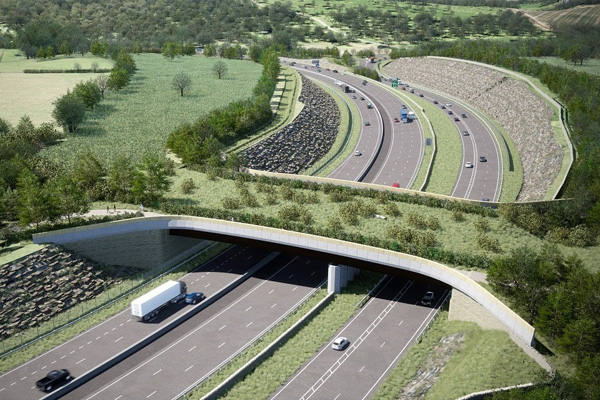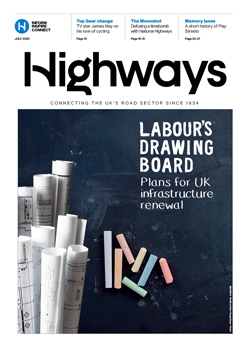National Highways’ top environment official has called for a 'green bridges' national plan to address severance issues and provide mitigation on new road schemes.
 Steve Elderkin (pictured), the company’s director of environmental sustainability, has said that he would like to see 80 such bridges on the SRN, a number that he said comes ‘from what the Dutch did since 2005’.
Steve Elderkin (pictured), the company’s director of environmental sustainability, has said that he would like to see 80 such bridges on the SRN, a number that he said comes ‘from what the Dutch did since 2005’.
So far, the government-owned company has constructed two green bridges and is planning or building another four.
The bridges, which were pioneered in the Netherlands, aim to create a safe crossing point for people and wildlife, join up habitats, connect colonies and benefit pollinators as well as integrate roads and railways into the surrounding landscape.
Mr Elderkin added: ‘They [the Dutch] secured funding over a 15-year period; that certainty allowed them to deliver quite a lot of interventions. I’m not committing us to 80; it’s just a sense of the scale that has been achieved over there.
‘How do make the case? What I really liked about the Dutch approach was, they looked at the national scale where nature connectivity will make the most difference for the health and resilience of the natural environment.'
To date, green bridges have been part of enhancement schemes, funded either out of the scheme’s budget or from National Highways’ £345m Environment and Wellbeing designated fund.
Mr Elderkin said: ‘I think there is an opportunity where we add them onto a scheme but there are lots of areas where we work where we have no investment schemes. We do need to think about how we are going to create more nature connectivity, even without having a major project in the vicinity.
‘I think it has to be a national case. Making each individual structure have a financial case in terms of benefits for nature will be really challenging.’

Mr Elderkin also said that he would like to see National Highways buying ‘as little land as possible’ to meet environmental targets.
Asked whether the company would benefit from compulsory purchase powers being extended to schemes delivering environmental mitigations, he said: ‘I think we should be trying to deliver environmental outcomes in partnership with people who are better placed to be land managers and that needs to be part of the management case early on in the project.
‘If we can do it that way, so allocating biodiversity units for projects, you don’t need to buy land for biodiversity units. I don’t want us to own any more land.’





